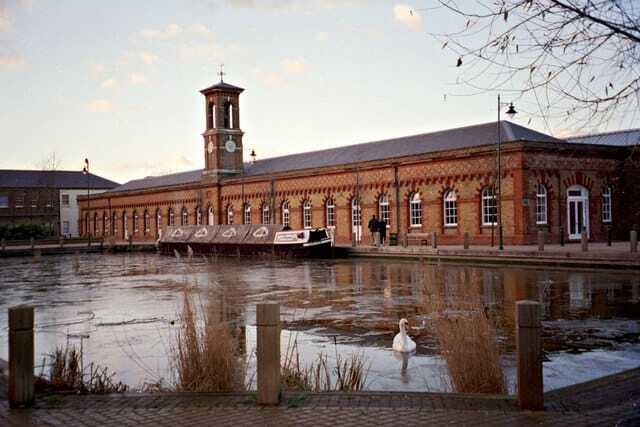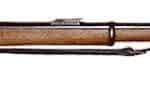
The Royal Small Arms Factory (RSAF), a name synonymous with British military history, was pivotal in equipping the country's armed forces with advanced weapons for more than a century. The Factory was a significant part of the UK's defense industry, shaping its history and marking its place on the global stage.
Founding of the Royal Small Arms Factory and the Early Years
The Royal Small Arms Factory was established in 1816 at Enfield, North London. This was a period marked by profound technological change and political unrest following the Napoleonic Wars. There was a growing need for a centralized armament manufacturing facility in the UK to ensure the steady supply of reliable weapons to the British army and navy.
The establishment of the Royal Small Arms Factory was a direct response to this need. The factory was strategically located along the River Lea, enabling easy transportation of raw materials and finished products. The Factory was an arm of the British War Office, operating under the direct supervision of the government.
The initial purpose of the RSAF was to manufacture and repair small arms, specifically muskets, for the British armed forces. Skilled craftsmen were employed in large numbers, transforming raw materials into functional weapons. The Factory marked the beginning of an era of centralized manufacturing, reflecting the beginning of the Industrial Revolution.
Arms Manufactured
Over the years, the RSAF produced a plethora of small arms used by the British military. Its products included rifles, muskets, bayonets, and later, machine guns and other sophisticated arms.
One of the most famous weapons manufactured by RSAF was the Lee-Enfield Rifle. Named after its place of origin and the designer James Paris Lee, the rifle was introduced in the late 19th century and saw extensive service throughout the 20th century. Known for its high rate of fire and remarkable accuracy, the Lee-Enfield was the primary firearm of British and Commonwealth forces during both World Wars and remained in active service for several decades.
Another notable product was the Sten submachine gun, a simple, cheap weapon manufactured in large quantities during World War II. The Sten was valued for its ease of production and use, attributes critical in the demanding conditions of war.
The RSAF also produced the Bren light machine gun, which gained popularity due to its reliability, ease of use, and sustained fire capability. It was used extensively by British and Commonwealth forces throughout World War II and beyond.
History and Place in History
The history of the Royal Small Arms Factory is intertwined with the development of the British Empire. Its weapons played a vital role in numerous conflicts, enabling Britain to maintain its colonial territories and assert its influence globally.
The Factory underwent significant expansion during World War I, producing weapons on an unprecedented scale to meet the demands of the conflict. Its importance grew during World War II when it became crucial to the war effort. The RSAF was a strategic target for German bombing raids, and despite the destruction, the Factory continued to operate and supply arms.
Post-World War II, the RSAF faced various challenges. The dawn of the Cold War saw a shift in military technology, and the Factory struggled to adapt. Moreover, the decolonization process and a changing political landscape meant a decrease in demand for traditional small arms. The Factory was decommissioned in 1988, with its operations moved to other facilities across the UK.
Nevertheless, the RSAF's place in history remains significant. It symbolizes the Industrial Revolution's impact on warfare and exemplifies Britain's military-industrial power during its imperial era. The RSAF also contributed to the local economy, providing employment and catalyzing the development of Enfield and surrounding areas.
Major Innovations
The RSAF was renowned for its innovative designs and manufacturing processes, which significantly impacted warfare. The Interchangeable parts system, introduced in the 1850s, was one of the most notable innovations. This system allowed for the mass production of weapons, with each part made to a standard design and easily replaceable. It increased production efficiency and made weapon maintenance easier on the battlefield.
The development of the Lee-Enfield Rifle itself was a major innovation. The weapon featured a bolt-action mechanism, which allowed for a higher rate of fire. Moreover, it was designed to be rugged and reliable, attributes that were highly valued in the demanding conditions of war.
The Sten submachine gun reflected the RSAF's ability to innovate in response to urgent wartime requirements. It was a weapon designed for mass production, simple in construction, and easy to use.
Most Weapons built at the Royal Small Arms Factory
From 1816 until its closure in 1988. Here is a list of some notable weapons produced by RSAF Enfield:
- Pattern 1853 Enfield Rifle-Musket: Also known as the Enfield Rifle-Musket, it was the first rifle to be issued to every soldier in the British Army and saw extensive use in the Crimean War.
- Snider-Enfield: A breech-loading rifle adopted by the British Army in 1866.
- Martini-Henry: The standard British rifle from 1871–1888, it replaced the Snider-Enfield.
- Lee-Metford and Lee-Enfield Rifles: Bolt-action, magazine-fed, repeating rifles that served as the main firearms of the British military forces from 1888 until the early 1960s.
- SMLE (Short Magazine Lee-Enfield) Rifle: This became the British service rifle in 1904 and saw service in both World Wars.
- Bren Light Machine Gun: Designed in the 1930s and used extensively by the British and Commonwealth armies during World War II and the Korean War.
- Sten Submachine Gun: A series of submachine guns used extensively by British and Commonwealth forces throughout World War II and the Korean War.
- Sterling Submachine Gun: Adopted by the British Army in 1944 and used until the late 1980s.
- L1A1 Self-Loading Rifle (SLR): The British version of the FN FAL battle rifle, it was the standard service rifle of the British Armed Forces from 1954 until 1985.
- SA80 (Small Arms for the 1980s) Series: Includes the L85A1 assault rifle and the L86A1 light support weapon. The SA80 series was adopted by the British Armed Forces in the mid-1980s. The L85A1 has had a controversial history, with criticisms of reliability and durability prompting significant redesign and modification by Heckler & Koch in the 2000s.
Controversies
The Royal Small Arms Factory (RSAF) and its products were subjects of various political issues throughout history. Here are a few notable instances:
- The SA80 Controversy: The SA80 series, which includes the L85A1 assault rifle, was intended to replace the aging L1A1 Self-Loading Rifle (SLR) in the British Army in the 1980s. However, the new weapons were plagued with numerous issues. The L85A1 was particularly criticized for its lack of reliability and durability, especially in harsh environments. Some of these issues were attributed to the design of the weapon, but many were due to production quality problems at the RSAF Enfield. This eventually led to a significant redesign and upgrade program carried out by the German company Heckler & Koch.
- Factory Closure and Privatization: The RSAF Enfield was closed in 1988 as part of a wider program of privatization and restructuring in the UK defence industry under the government of Prime Minister Margaret Thatcher. This resulted in significant job losses and was controversial at the time. After the closure of the factory, the production of the SA80 series was taken over by the German company Heckler & Koch.
- The Adoption of the L1A1 SLR: The decision to adopt the L1A1 SLR, a semi-automatic version of the Belgian FN FAL, in the 1950s was also politically contentious. At the time, there was a debate over whether the British Army should adopt a fully automatic assault rifle like the U.S. M14 or a semi-automatic battle rifle like the SLR. The decision to adopt the SLR and produce it under license at RSAF Enfield was influenced by a range of factors, including the perceived needs of the British Army, the limitations of RSAF Enfield, and the politics of NATO standardization.
These are just a few examples. The history of RSAF Enfield and its products intersects with many of the key political and military debates in British history.
Competition
The Royal Small Arms Factory (RSAF) faced competition from both domestic and international manufacturers. Within the UK, firms such as BSA (Birmingham Small Arms Company), Lanchester, and later, the Royal Ordnance Factories posed significant competition.
Internationally, RSAF competed with renowned arms manufacturers like Mauser in Germany, Remington and Colt in the USA, and Fabrique Nationale in Belgium. These companies often produced similar types of weapons and vied for contracts from various militaries worldwide.
However, the Royal Small Arms Factory (RSAF)'s status as a government-operated institution often gave it an advantage. It was typically the first choice for British military contracts, and its products were known for their quality and reliability.
In conclusion, the Royal Small Arms Factory played a significant role in British military history. Its innovative designs and manufacturing techniques, coupled with the crucial arms it produced, contributed immensely to Britain's military might during its imperial era. Despite being decommissioned, the Factory's legacy continues to be evident in modern British military weaponry and the broader defense industry.
Want to learn more? Visit the Royal Small Arms Factory!
If you know of any forums or sites that should be referenced on this listing, please let us know here.




